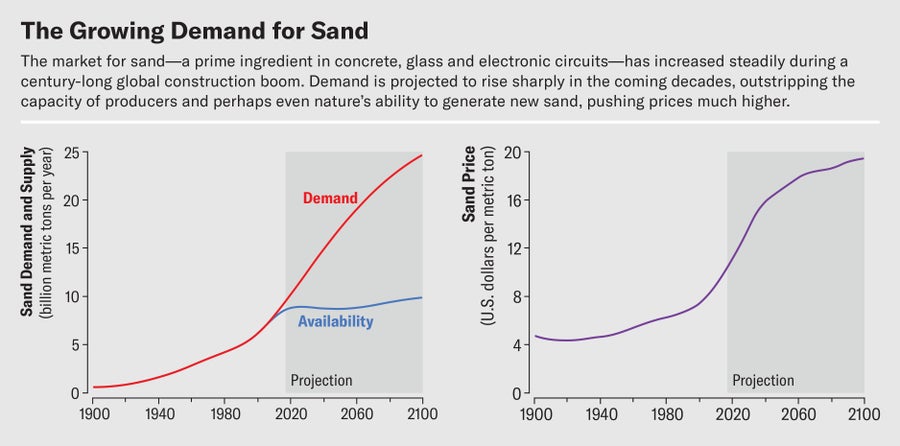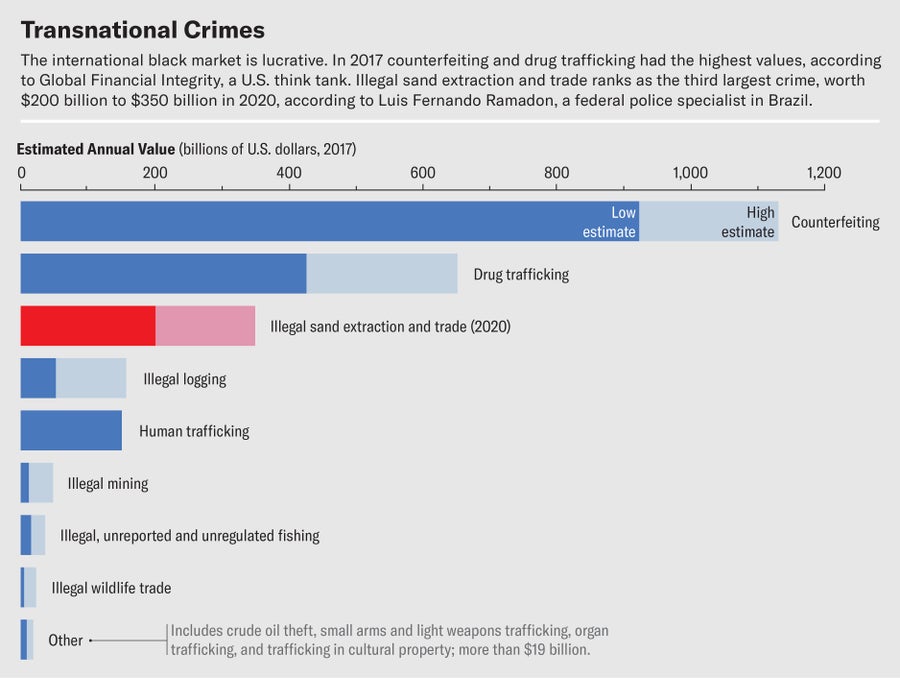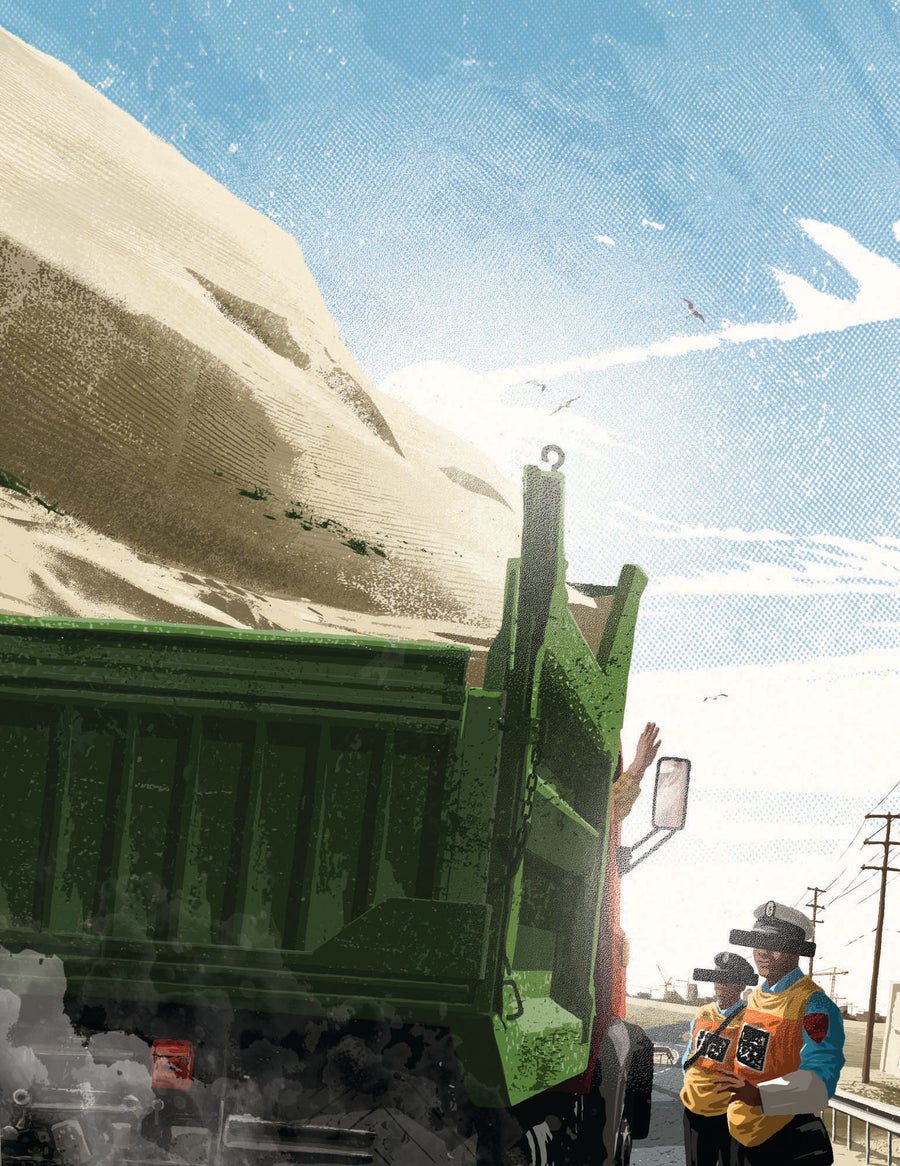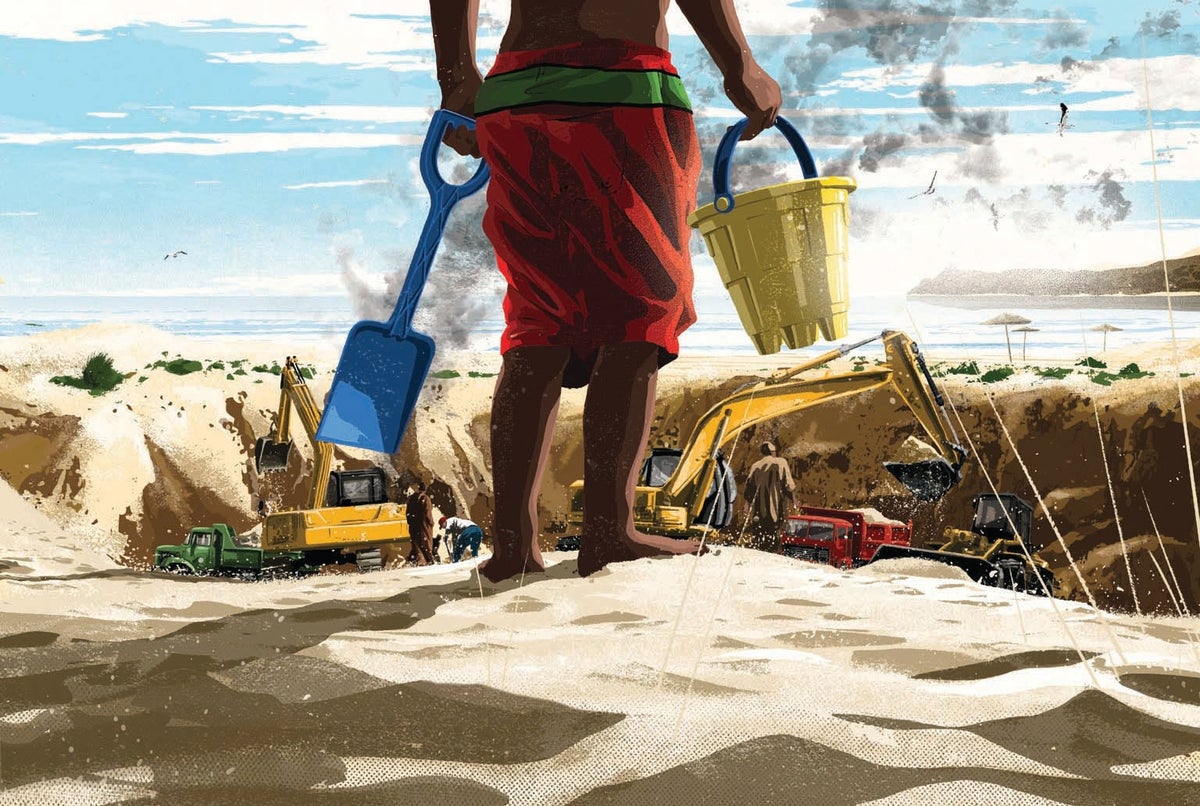
Inside the Crime Rings Trafficking Sand
Organized crime is mining sand from rivers and coasts to feed demand worldwide, ruining ecosystems and communities. Can it be stopped?
15 MIN READ
Inside the Crime Rings Trafficking Sand
Organized crime is mining sand from rivers and coasts to feed demand worldwide, ruining ecosystems and communities. Can it be stopped?BY DAVID A. TAYLOR
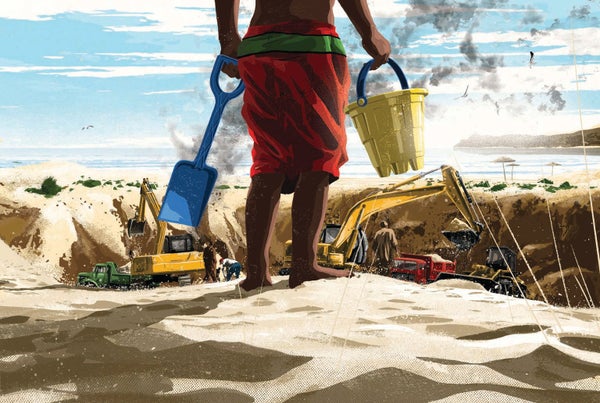
Credit:
Mark Smith
February 2024 Issue
Ethics
Transnational security investigator Abdelkader Abderrahmane set out from the Moroccan city of Kenitra with two research assistants to inspect sand-mining sites on the Atlantic Ocean coast. They drove across the dry, flat terrain for six kilometers, the last stretch on a rutted dirt road that had them crawling in low gear, windows closed against the hot dust. The beach dunes where they were headed lay beyond a rise. As they approached, a man wearing a gendarme cap suddenly appeared to their right, speeding toward them on an all-terrain vehicle. With angry gestures, he forced them to a stop. “Why are you here?!” he demanded. “There's nowhere to go.” One assistant said they just wanted to visit the beach and the nearby tourist camp. The gendarme shook his head: no further.
They turned around and began to creep back down the rough road, but as soon as the gendarme was out of sight they turned off and snuck along a hidden side of the ridge. About 400 meters further they stopped and cut the engine. Abderrahmane walked quietly to the crest of the bluff to peer down, keeping low to avoid being seen. Despite all his research into illegal sand mines, he was unprepared for the scene below. Half a dozen dump trucks scattered across a deeply pitted moonscape were filled high with brown sand. Just beyond lay the light blue sea. Abderrahmane was stunned by the “major disfiguration” of the dunes, he told me later on a video call. “It was a shock.”
Part of his shock came from the sight of desecrated nature, but part came from seeing the brazenness of trucks hauling sand in full daylight. “You cannot illegally mine sand in daylight if you don't have people helping you,” he says—people in high places. “Big companies are being protected, perhaps by ministers or deputy ministers or whoever. It's a whole system.” Everyone in the sand-trafficking market “benefits from it, from top to bottom.”
For the past 15 years the slender, bespectacled Abderrahmane has studied environmental trade and crime for the Institute for Security Studies (ISS), an African research and policy advisory organization based in South Africa. ISS papers showed how environmental degradation can fuel tensions among people and compromise security. But until a few years ago Abderrahmane had never heard of sand trafficking. He had been in Mali doing fieldwork on the drug trade when a source noted that most cannabis in Mali came from Morocco and that sand trafficking was also a major market in that country, with drug traffickers involved. “I think that when you talk about sand trafficking, most people would not believe it,” Abderrahmane says. “Me included. Now I do.”
Very few people are looking closely at the illegal sand system or calling for changes, however, because sand is a mundane resource. Yet sand mining is the world's largest extraction industry because sand is a main ingredient in concrete, and the global construction industry has been soaring for decades. Every year the world uses up to 50 billion metric tons of sand, according to a United Nations Environment Program report. The only natural resource more widely consumed is water. A 2022 study by researchers at the University of Amsterdam concluded that we are dredging river sand at rates that far outstrip nature's ability to replace it, so much so that the world could run out of construction-grade sand by 2050. The U.N. report confirms that sand mining at current rates is unsustainable.
The greatest demand comes from China, which used more cement in three years (6.6 gigatons from 2011 through 2013) than the U.S. used in the entire 20th century (4.5 gigatons), notes Vince Beiser, author of The World in a Grain. Most sand gets used in the country where it is mined, but with some national supplies dwindling, imports reached $1.9 billion in 2018, according to Harvard's Atlas of Economic Complexity.
Companies large and small dredge up sand from waterways and the ocean floor and transport it to wholesalers, construction firms and retailers. Even the legal sand trade is hard to track. Two experts estimate the global market at about $100 billion a year, yet the U.S. Geological Survey Mineral Commodity Summaries indicates the value could be as high as $785 billion. Sand in riverbeds, lake beds and shorelines is the best for construction, but scarcity opens the market to less suitable sand from beaches and dunes, much of it scraped illegally and cheaply. With a shortage looming and prices rising, sand from Moroccan beaches and dunes is sold inside the country and is also shipped abroad, using organized crime's extensive transport networks, Abderrahmane has found. More than half of Morocco's sand is illegally mined, he says.
Luis Fernando Ramadon, a federal police specialist in Brazil who studies extractive industries, estimates that the global illegal sand trade ranges from $200 billion to $350 billion a year—more than illegal logging, gold mining and fishing combined. Buyers rarely check the provenance of sand; legal and black market sand look identical. Illegal mining rarely draws heat from law enforcement because it looks like legitimate mining—trucks, backhoes and shovels—there's no property owner lodging complaints, and officials may be profiting. For crime syndicates, it's easy money.
The environmental impacts are substantial. Dredging rivers destroys estuaries and habitats and exacerbates flooding. Scraping coastal ecosystems churns up vegetation, soil and seabeds and disrupts marine life. In some countries, illegal mining makes up a large portion of the total activity, and its environmental impacts are often worse than those of legitimate operators, Beiser says, all to build cities on the cheap.
Questionable mining happens worldwide. In the early 1990s in San Diego County, California, officials stopped mining from the San Luis Rey River, only to see operators move across the border into Baja California to plunder riverbeds there. Until a few years ago, a mine north of Monterey, Calif., operated by Cemex, a global construction company, was pulling more than 270,000 cubic meters of sand every year from the beach, operating in a legal gray zone. That was the last beach mine in the U.S., shut down in 2020 by grassroots pressure. Mining in rivers and deltas, however, is still going strong throughout the U.S., not all of it legal.
